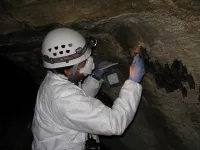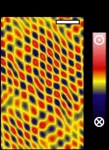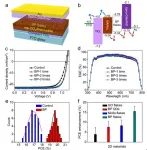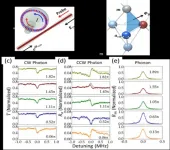(Press-News.org) The risk is low that scientists could pass coronavirus to North American bats during winter research, according to a new study led by the U.S. Geological Survey. Scientists find the overall risk to be 1 in 1,000 if no protective measures are taken, and the risk falls lower, to 1 in 3,333 or less, with proper use of personal protective equipment or if scientists test negative for COVID-19 before beginning research.
The research specifically looked at the potential transmission of SARS-CoV-2, which is the type of coronavirus that causes COVID-19, from people to bats. Scientists did not examine potential transmission from bats to people.
"This is a small number, but the consequences of human-to-bat transmission of coronavirus are potentially large," said USGS scientist Evan Grant, an author of the new rapid risk assessment. "The virus has not been identified in North American bats, but if it is introduced, it could lead to illness and mortality, which may imperil long-term bat conservation. It could also represent a source for new exposure and infection in humans."
"These are hard risks for wildlife managers and other decision makers to weigh as they consider whether and how to allow researchers to study bats in their winter colonies," continued Grant.
Bats provide natural services that people value; for example, previous USGS studies found that bats save the U.S. agriculture industry more than $3 billion per year by eating pests that damage crops, reducing the need for pesticides. Yet they are often erroneously portrayed as menacing creatures at Halloween and in horror movies. They are also under duress from white-nose syndrome, a disease that has killed millions of bats in North America.
The origin of SARS-CoV-2 is not confirmed, but studies indicate the virus likely originated from similar viruses found in bats in the Eastern Hemisphere.
The rapid risk assessment conducted by the USGS and U.S. Fish and Wildlife Service focused on the winter season, when some wildlife scientists conduct field work that may require close contact with or direct handling of the animals. This includes research on white-nose syndrome and population studies that support Endangered Species Act decisions.
"If scientists wear protective equipment, particularly properly fitted masks with high filtration efficiency, or test negative for COVID-19 before conducting the research, they greatly reduce the risk of transmission to North American bats," said USGS scientist Michael Runge, another author on the new assessment.
"The current assessment represents the best available information and is useful for informing time-sensitive management decisions, but there are still many unknowns about how susceptible North American bats are to SARS-CoV-2 and how future virus variants may affect transmission," said Grant.
"The potential for SARS-CoV-2 to infect wildlife is a real concern for state and federal wildlife management agencies and reflects the important connections between human health and healthy environments," said Jeremy Coleman, National White-nose Syndrome Coordinator for the USFWS and an author of the paper. "Natural resource managers need information from these kinds of analyses to make science-based decisions that advance conservation efforts while also protecting the health of people, bats, and other wildlife."
Three bat species - free-tailed bats, little brown bats and big brown bats - were included in the analysis. They were chosen because they have physical and behavioral differences and are typical of the kinds of bats studied in winter. Scientists considered different ways the virus could be transmitted between humans and bats, with airborne transmission as the main pathway.
This study estimates transmission risk to at least one bat during a typical winter survey, which includes a team of five scientists spending one hour in a cave colonized by 1,000 bats.
This research builds on a USGS-led study published last year that examined the likelihood of researchers transmitting SARS-CoV-2 to bats during summer research. Since that study, a substantial amount of new data and knowledge on the virus has been acquired and applied. Winter and summer research can involve different settings and activities.
INFORMATION:
The USGS research was conducted through the Eastern Ecological Science Center at the Patuxent Research Refuge and National Wildlife Health Center.
Read the study, "Risks Posed by SARS-CoV-2 to North American Bats During Winter Field Work" published in Conservation Science and Practice at https://conbio.onlinelibrary.wiley.com/doi/10.1111/csp2.410.
University of Warwick physicists set out to find Skyrmions, only to find near-identical object with distinctive qualities that they have named an incommensurate spin crystal
Scientists looked for the signs of the magnetic spin texture in ultra-thin materials only a few atoms thick
Physicists have great interest in the potential of Skyrmions frequently detected by their ambiguous, bulk electrical measurements.
This new discovery could point the way for a new basis for technologies in computer memory and storage
Physicists on the hunt for a rarely seen magnetic spin texture have ...
A study led by Queen Mary University of London researchers has compared the performance and acceptability of a urine test and four different vaginal self-sampling collection devices to detect high risk Human Papilloma Virus (HPV).
Corresponding author Professor Jack Cuzick from Queen Mary University of London said: "Uptake of cervical screening has been declining in the UK in recent years, and self-sampling is an attractive alternative to clinician collected samples, initially in non-attenders but potentially for all women as the primary option.
"Cost and simplicity of use are important factors, and in low- and middle-income countries self-sampling may prove to be the only practical cost-effective ...
Grain boundaries (GBs) in PSCs have been found to be detrimental to the photovoltaic performance of the devices. Numerous papers reported that the defects in perovskite GBs should be passivated by suitable materials, such as quaternary ammonium halide, fullerene derivatives and CH3NH3I, to alleviate carrier recombination and consequently improve the device performance.
In a new paper published in Light: Science & Applications, a team of scientists, led by Professor Feng Yan from Department of Applied Physics, The Hong Kong Polytechnic University, Hung Hom, Kowloon, Hong Kong, and co-workers have developed a novel method to overcome the drawback of perovskite GBs without ...
Many slopes in the Campania region are covered with layers of volcanic soil, the result of repeated eruptions over the course of millennia. As the impacts of climate change worsen, including the occurrence of very intense and short rainfall in localized areas, there is a growing need, especially in this and other Italian regions that are vulnerable to landslides, to understand the dynamics that induce such events more precisely and develop models that can predict them. When employed through adequate early warning systems, these tools can support decision-makers in adopting effective and efficient measures to protect people and the areas themselves from landslides.
To ...
The human body is an incredibly designed machine, and mechanical processes such as those in the lymphatic system play major roles in maintaining healthy tissue and organs.
Donny Hanjaya-Putra is an assistant professor whose work lies at the intersection of engineering and medicine. He studies the lymphatic system -- the part of the immune system that rids the body of toxins and other unwanted materials. He looks at how to restore dysfunctional lymphatic networks, which are associated with a wide range of diseases, including cancer, cardiovascular disease, diabetes, neurological conditions and metabolic syndromes.
Now Hanjaya-Putra and his team -- bioengineering doctoral student Laura Alderfer, along with Elizabeth Russo, a 2019 graduate; ...
The research team led by Prof. GUO Guangcan and Dr. DONG Chunhua from the University of Science and Technology of China realized synthetic gauge fields in a single optomechanical resonator by controlling geometric phase with the multimode interaction in the micro-resonator.
By engineering a Hamiltonian, uncharged particles or bosonic excitations can acquire a path-dependent phase which realizes a synthetic magnetic field. Such synthetic gauge field can improve the precision of quantum many-body simulation and control over bosons.
Previous works have realized synthetic gauge fields through coupled resonators, while this time the team realized synthetic gauge field in a single optomechanical resonator based on multimode interaction of microcavity. ...
Close to 60% of working adults who were hospitalized as a result of an injury had returned to their jobs after being discharged, according to a recent study in the Journal of Trauma and Acute Care Surgery.
However, more than half of the patients in the study's sample were in medical debt, and close to a quarter forwent additional care to save money. Compared to those who were not injured, patients were also more likely to experience food insecurity, physical disability, and difficulty affording and accessing health care.
The research team, which included several Michigan Medicine physicians, ...
GALVESTON, TEXAS -- A new research study leveraging a database from the largest equal access health system in the US, the Department of Veteran Affairs, offers insight into the outcome of specific treatment patterns for advanced bladder cancer patients. Lead author Dr. Stephen Williams of the University of Texas Medical Branch says it is one of the first comprehensive studies looking at both the outcomes and the costs of treating a potentially lethal and devastating type of bladder cancer.
The study was published today in JAMA Network Open, a ...
Leesburg, VA, April 1, 2021--A Scientific E-Poster to be presented at the 2021 ARRS Virtual Annual Meeting reveals increased rates of emphysema in marijuana smokers, compared to both non-smokers and tobacco-only smokers, as well as greater rates of paraseptal emphysema.
"Marijuana smoking is also associated with airways disease, including bronchial wall thickening, bronchiectasis, and bronchiolar mucoid impaction, in comparison to both the control group and tobacco-only group," wrote first author Luke Murtha of Ottawa Hospital in Canada.
Querying imaging reports on Ottawa Hospital's PACS, Murtha and colleagues identified three ...
Leesburg, VA, April 1, 2021--A Scientific E-Poster to be presented at the 2021 ARRS Virtual Annual Meeting found the COVID-19 "Safer at Home" order resulted in a significant decline in radiology ordering utilization, outpatient consultations, and emergency department (ED) visits.
"There was a disproportionate impact in the outpatient setting, especially on screening and other nonessential imaging," wrote Evan Raff of Olive View-UCLA Medical Center, which "mirrors the impact that the order has had on clinical services, as reflected in outpatient consult volumes, ...





